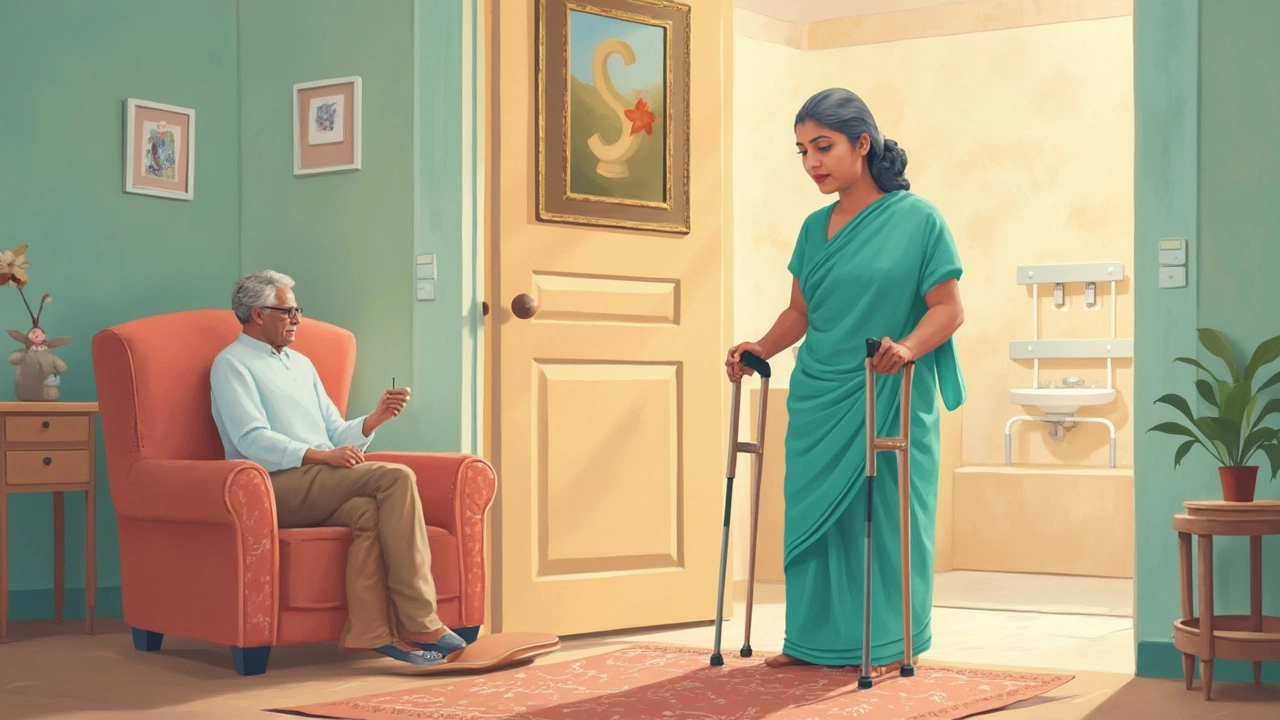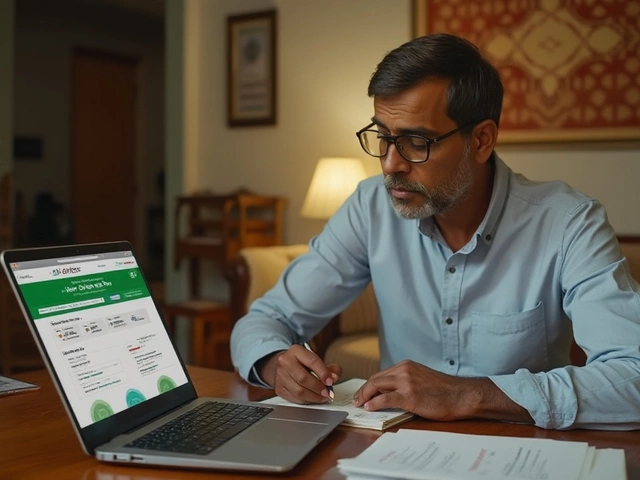Post-surgery life isn't always a walk in the park, especially when it involves everyday tasks like using the bathroom. If you've just had knee surgery, figuring out how to sit on the toilet without causing discomfort—or worse, injury—can be a puzzle.
First things first, you need to understand that your knee won't be the same right after surgery. It's going to be sensitive, with limited range of motion. This means you have to approach sitting on the toilet with a bit of care and mindfulness.
What can help? Well, there are nifty tools available like raised toilet seats with handles. These can make a world of difference by reducing the pressure on your knee.
Installing grab bars in your bathroom is another smart move. They give you something sturdy to hold onto, making the whole process much safer.
So, ready to turn this mundane task into a manageable one? Let’s dig into the steps you can take, the tools you need, and some comfort tips to make your post-surgery phase as seamless as possible.
- Understanding Your Knee Post-Surgery
- Essential Tools for Bathroom Safety
- Step-by-Step Guide to Sitting Safely
- Tips for a Comfortable Recovery
- When to Seek Professional Help
Understanding Your Knee Post-Surgery
So, you’ve just had knee surgery? That's a big deal, and it's natural to want to get back to normal life as soon as possible. However, it's crucial to know what’s happening in your knee during this recovery phase.
Your knee will likely be swollen and bruised post-surgery. This is your body’s way of healing what's been operated on. You might notice limitations in the bending and straightening movements. This isn't just annoying—it's something to be mindful of to avoid straining your new joint.
One of the main goals of knee surgery recovery is to regain your knee's range of motion. Physical therapy will be your best friend here. You’ll work on exercises that help improve flexibility and strength. It's not overnight magic though; patience is key.
Watch Out for Pain and Swelling
Pain and swelling aren't the fun parts, but they're common. Keep an eye on them, and regularly ice your knee to manage swelling. Elevation helps too—prop your leg up on a couple of pillows when you're lying down.
Now, you do need to exercise, but don’t overdo it. Balance is everything. Listen to your body and your physical therapist.
Monitor Your Healing
Here’s a quick look at what the initial weeks might involve:
- Week 1-2: Focus on keeping the swelling down and managing your pain. Keep movements gentle and controlled.
- Week 3-4: Start increasing your range of motion exercises. Aim for small improvements.
- Weeks 5+: You might be ready to tackle more ambitious movement. Don’t rush things; continue to go at your body’s pace.
Remember, every small step counts. Understanding your knee post-surgery is half the battle. Once you get a grip on these essentials, other tasks, like safely sitting on the toilet, will seem much less daunting. Keep this focus, and you’ll be back to normal activities sooner than you think!
Essential Tools for Bathroom Safety
After knee surgery, bathroom safety can’t be overlooked. The right tools can make getting on and off the toilet much safer and less of a balancing act.
Raised Toilet Seats
One of the first things to consider is a raised toilet seat. This adds height to your toilet, which means you don't have to bend your knee too much. Less bending means less stress on your healing joint.
- Installed with ease – You usually secure it right over your existing toilet seat.
- Handles – Look for versions with handles or armrests to provide more support.
Grab Bars
Having something to hold onto is a game-changer. Installing grab bars near your toilet can help you lower and lift yourself steady and safely.
- Position them where you naturally reach out for support.
- Ensure they are sturdy and can bear weight.
Non-Slip Mats
Slipping in the bathroom? That’s the last thing you want after knee surgery. Invest in a good quality non-slip mat to avoid any unwanted slides.
Portable Commodes
If your bathroom is tight on space, or you find it hard to move around, consider a portable commode. They can sit beside your bed and come with height adjustments and strong handles.
Interesting Stat
While recovery times vary, it's estimated that using these tools can improve overall mobility by up to 40% during the first six weeks after a knee replacement. Though not a miraculous number, every bit helps when regaining independence!
With these tools by your side, trips to the bathroom won't be that dreaded part of your day. Instead, you'll be equipped to handle it smoothly and safely, letting you focus on what matters: healing and getting back to your usual self.

Step-by-Step Guide to Sitting Safely
Navigating the toilet post-knee surgery might seem straightforward, but there’s a bit more to it when your joint is sensitive. Here’s a detailed guide to make your bathroom trips safe and comfortable.
1. Prepare Your Space
Before you even approach the toilet, make sure the bathroom is well-equipped. A raised toilet seat is a great investment as it helps reduce the distance you need to bend. Grab bars offer extra stability, especially when your balance isn't perfect.
2. Approach with Care
When you're ready to use the bathroom, move slowly. Use a walker or crutches if you need them. Stand close to the toilet so you don't have to twist, which can strain your recovery.
3. Lower Yourself Safely
- Turn so that your back is facing the toilet seat.
- Place one hand on the grab bar and the other on the handle of your raised toilet seat.
- Gently lower yourself by bending from your hips and slightly from your knees, keeping your operated leg straight out if possible.
- Do not rush – take it slow to avoid any sudden movements.
4. Getting Up
Once you're done, reverse the process. Follow these steps carefully:
- Use your arms to push yourself upward, keeping your weight off the recovering knee.
- Lean forward a bit to get your center of gravity over your feet.
- Stand up slowly, again using supports like the grab bar or your walker.
Handy Tip
If possible, have someone nearby during those early days of recovery, just to be on the safe side.
Stay Aware
No step in recovery should be painful. If you're feeling any sharp or unusual pain, it might be time to consult with your healthcare provider.
| Item | Benefit |
|---|---|
| Raised Toilet Seat | Reduces bending need by 3-5 inches |
| Grab Bars | Offers stability, reduces fall risk by 50% |
There you go, a practical step-by-step guide to tackle the toilet in your post-surgery recovery. It’s all about taking it slow and using the right support!
Tips for a Comfortable Recovery
Getting back to normal life after knee surgery doesn't have to be a struggle. Here are some tips that can help you recover more comfortably and safely.
Stay Active but Don't Overdo It
It's crucial to keep moving as much as your doctor allows you. Think of it this way: the more you stay active, the faster you'll regain your strength. Start with short, easy walks around your house, and gradually increase the length as you feel more stable.
Practice Proper Technique
When you're using the toilet, try to keep your operated leg out in front of you to avoid bending the knee too much. Use your arms to help lift yourself up and down. This takes some pressure off your knees.
Pain Management
It's important to manage pain effectively. Follow your doctor's advice on medications, and consider using ice packs to reduce swelling. This simple step can prevent small discomforts from turning into large issues.
Home Modifications
Make sure your living space is set up for easy navigation. This includes removing loose rugs that you could trip over, keeping essentials within reach, and using strong, high chairs instead of soft couches.
Keep Communication Open
If you're feeling any unusual pain or discomfort, let your healthcare provider know. They're there to help guide you through this knee surgery recovery process.
Track Your Progress
Sometimes it helps to track your progress in a simple chart, something like this:
| Week | Activity Level | Pain Scale (1-10) |
|---|---|---|
| 1 | Minimal Activity | 6 |
| 2 | Mild Walking | 5 |
| 3 | Increased Activity | 3 |
Seeing your improvements can keep you motivated.
By following these tips, you'll make your toilet seating and daily activities much easier while healing from your surgery. It's all about finding the right balance between activity and rest.

When to Seek Professional Help
Recovering from knee surgery isn't just about physical healing; it's also about knowing when it's time to call in the experts. Sometimes, things don't go as planned, and that's okay as long as you know when and where to look for help.
First, let's talk about pain. Some discomfort is normal, but if your pain is intense or suddenly gets worse, it's time to check in with your doctor. Pain that disrupts your daily activities or makes it impossible to sit comfortably on the toilet should raise a red flag.
Red Flags to Watch For
- Swelling and Redness: If your knee is excessively swollen or there's noticeable redness that doesn't go away with ice and elevation, it might be more than just regular post-surgery symptoms.
- Fever: A fever can be a sign of infection, and if it's coupled with severe knee pain and swelling, it's a clear signal to contact your healthcare provider.
- Decreased Mobility: If you're struggling to move around or bend your knee as much as expected during your recovery, professional advice can help prevent further complications.
If you're scoring high in any of these areas, don't wait too long to reach out. Prompt action can make all the difference in a knee surgery recovery journey.
Stat Check: Common Complications
| Complication | Incidence Rate |
|---|---|
| Post-Surgical Infection | 1-2% |
| Blood Clots | 2-4% |
| Implant Loosening | Less than 1% |
Knowledge of these knee replacement risks isn't meant to scare you, but rather arm you with the info needed to tackle any complications head-on.





